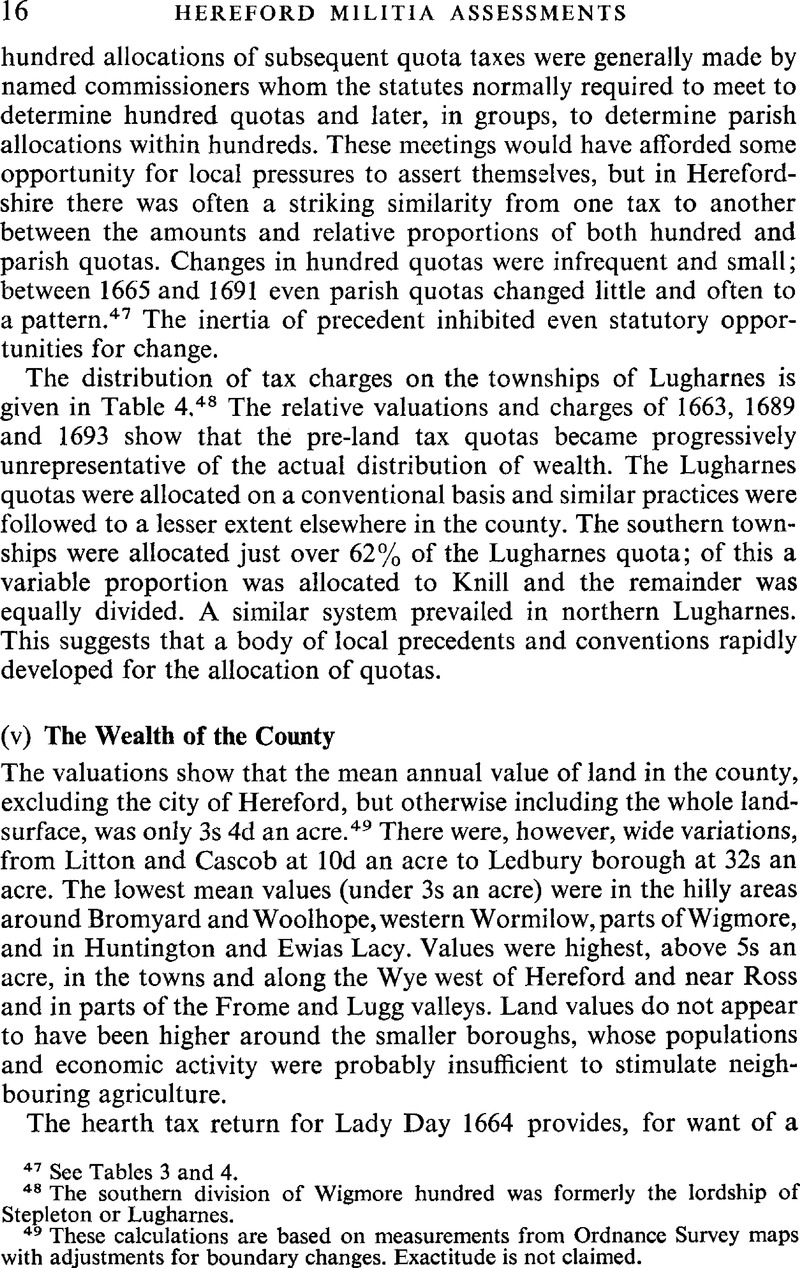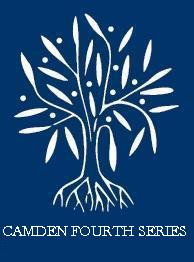No CrossRef data available.
Article contents
(v) The Wealth of the County
Published online by Cambridge University Press: 21 December 2009
Abstract

- Type
- Introduction
- Information
- Camden Fourth Series , Volume 10: Herefordshire Militia Assessments of 1663 , July 1972 , pp. 16 - 20
- Copyright
- Copyright © Royal Historical Society 1972
References
49 These calculations are based on measurements from Ordnance Survey maps with adjustments for boundary changes. Exactitude is not claimed.
50 See Table 6. Gregory King's figures associating hearth tax charges with household size are not appropriate to Herefordshire without adjustments. Here the analysis is related to households rather than heads.
51 See Table 5; the proportions are obtained by comparing hearth tax returns with the valuations.
52 See Table 5.
53 During the next two centuries large estates became even larger. In 1873 the twenty-six largest landowners owned 22% of the county valuation (including the city of Hereford); House of Commons Sessional Papers, Return of Owners of Land 1873, England and Wales, lxxii (1874).Google Scholar
54 See Table 5.
55 Supra, note 20. The 1656 assessment on Lyonshall is closer to the hearth tax return of 1664 in numbers of names than it is to the 1663 militia valuation.
56 Ward, W. R., The English Land Tax in the Eighteenth Century (1953), p. 8Google Scholar et seq.
57 4 Gul. & Mar., c. 1. The city of Hereford was valued at circa £3,800 in 1693.
58 See p. 23.
59 See Jones, E. L., ‘Agricultural Conditions and Changes in Herefordshire, 1660–1815’, TWC, xxxvii (1961), p. 32Google Scholar, and Jackson, J. N., ‘Some Observations upon the Herefordshire Environment of the 17th and 18th Centuries’, TWC, xxxvi (1958), p. 28Google Scholar. Some of the factors leading to change are described in these articles, which together represent almost the only published work covering the rural economy of Herefordshire in the late 17th century.
60 29 Car. II, c. 1, and 1 Ann., c. 6. The 1677 assessment, at half the royal aid rate, is the only one for the period 1660–88 for which a full set of parish quota i vailabl; E.179/119/490.


